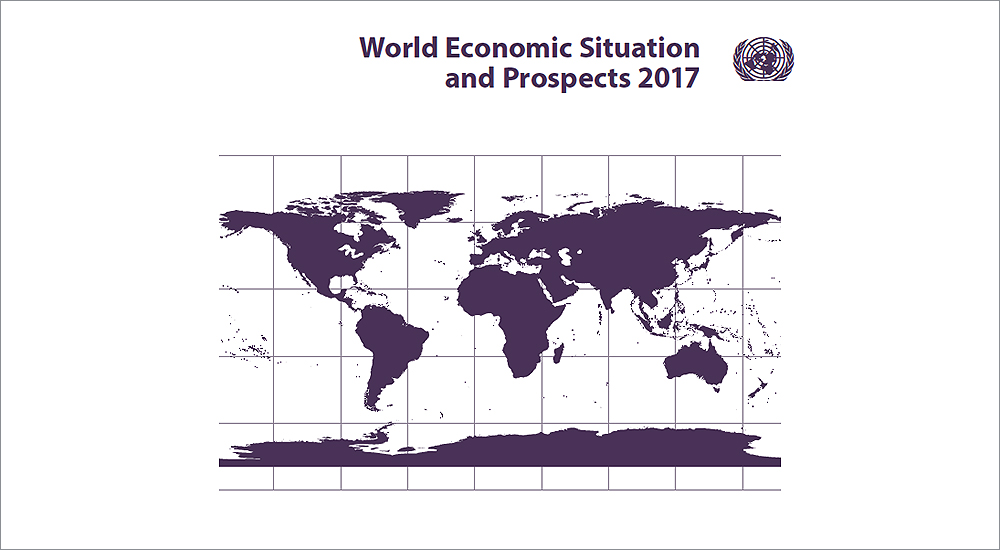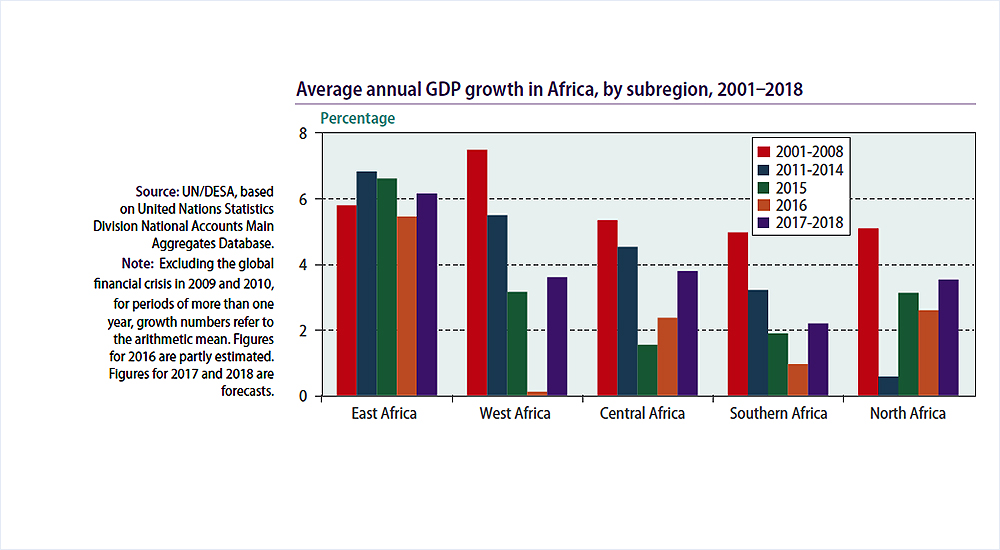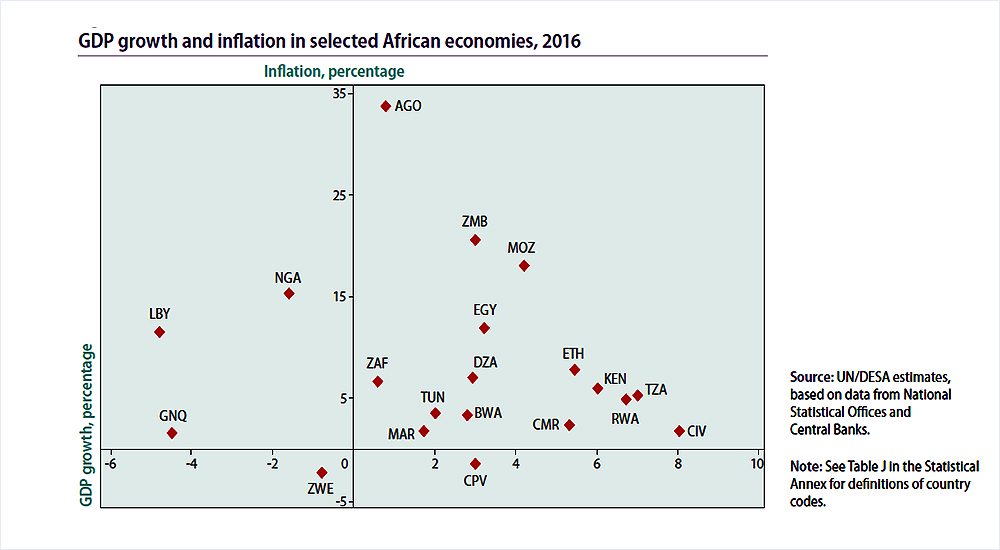Africa to grow moderately in 2017-18 despite global economic slowdown
A moderate economic growth recovery is projected in Africa for 2017-18, even as the global economy continues to be trapped in a prolonged period of slow growth, according to the United Nations World Economic Situation and Prospects WESP 2017 Report.
The report shows that world gross product grew by just 2.2% in 2016, marking its slowest pace of expansion since the Great Recession of 2009. Global growth is projected to see a moderate improvement to 2.7% in 2017 and 2.9% in 2018, but this is more an indication of economic stabilisation than a signal of a robust revival of global demand.
Against this backdrop, Africa is expected to see a recovery in growth, with GDP expanding by 3.2% in 2017 and 3.8% in 2018, up from 1.7% in 2016. The projected increase in global commodity prices will ease fiscal and external pressures for commodity exporters, but a strong growth rebound in these countries appears unlikely. Several other countries, such as those in the East African Community and some Western African economies, enjoy a more favourable growth outlook.
The report notes large differences in growth prospects among the five African sub-regions. East Africa is positioned to remain the fastest-growing sub-region, with aggregate GDP projected to expand by about 6% in 2017 and 2018, helped by the rapid expansion of domestic markets and strong spending on infrastructure.
West Africa is expected to see growth rebound from 0.1% in 2016 to 3.1% in 2017, as the projected increase in oil prices eases severe fiscal and external pressures in Nigeria. For several other West African countries, such as Cote d’Ivoire, Ghana and Senegal, the growth outlook remains strong, underpinned by large infrastructure investments and an improved domestic business climate.
Meanwhile, growth in North Africa is projected to accelerate from 2.6% in 2016 to 3.5% in 2017, contingent on a gradual improvement in the security situation.
The growth outlook for Southern Africa is relatively subdued, with economic activity projected to improve modestly to 1.8% in 2017 and 2.6% in 2018. While South Africa is expected to benefit from a moderate recovery in the agriculture and mining sector, political uncertainty may weigh on investor sentiments.
Growth in Central Africa is projected to strengthen from 2.4% in 2016 to 3.4% in 2017, as higher oil prices support export revenues and growth, particularly in Congo, Equatorial Guinea and Gabon. However, ongoing domestic political unrest will restrain economic activity in the Central African Republic and Gabon.
The report also takes note of marked differences in the inflation dynamics across the region. For the commodity-dependent economies, the weakening of domestic currencies fuelled imported inflation. The adverse impact of drought conditions and rising electricity tariffs added further upward pressure on inflation. In Angola, Mozambique and Nigeria, inflation reached multi-year highs. As high inflationary pressures are expected to persist in these economies, monetary policy stances will likely remain tight.
In contrast, inflation in the region’s net oil importers stabilised or slowed in 2016 and pressures are expected to remain subdued going forward. In several of these countries, including Botswana, Kenya and Morocco, central banks reduced policy rates in 2016 in a bid to stimulate growth.
The report cautions that there are significant risks to the global and the regional outlook. Among other issues, the report highlights the high degree of uncertainty in the international policy environment and elevated foreign currency-denominated debt levels as key downside risks that may derail global growth.
For Africa, the report identifies renewed weakness in commodity prices and a sharper-than-expected growth moderation in China as major risks. On the domestic side, an escalation of security concerns and political unrest could deter foreign investment and severely disrupt economic activity in some countries.
The report calls for a more balanced policy approach to not only restore robust growth in the medium term, but also to achieve greater progress on sustainable development. Given that commodity prices are projected to increase only modestly, the report also underscores the need for African economies to further strengthen policy measures to tackle domestic structural weaknesses, including measures to accelerate economic diversification, rebuild policy buffers and promote stronger job creation.
The World Economic Situation and Prospects report is the UN’s flagship publication on expected trends in the global economy. The WESP is produced annually by the UN Department of Economic and Social Affairs, the UN Conference on Trade and Development, the five UN regional commissions and the World Tourism Organisation.




